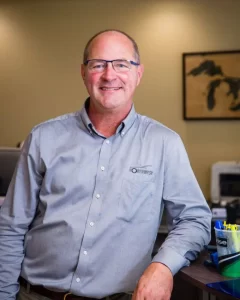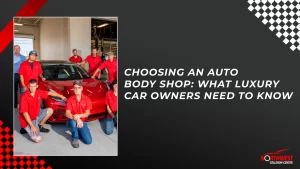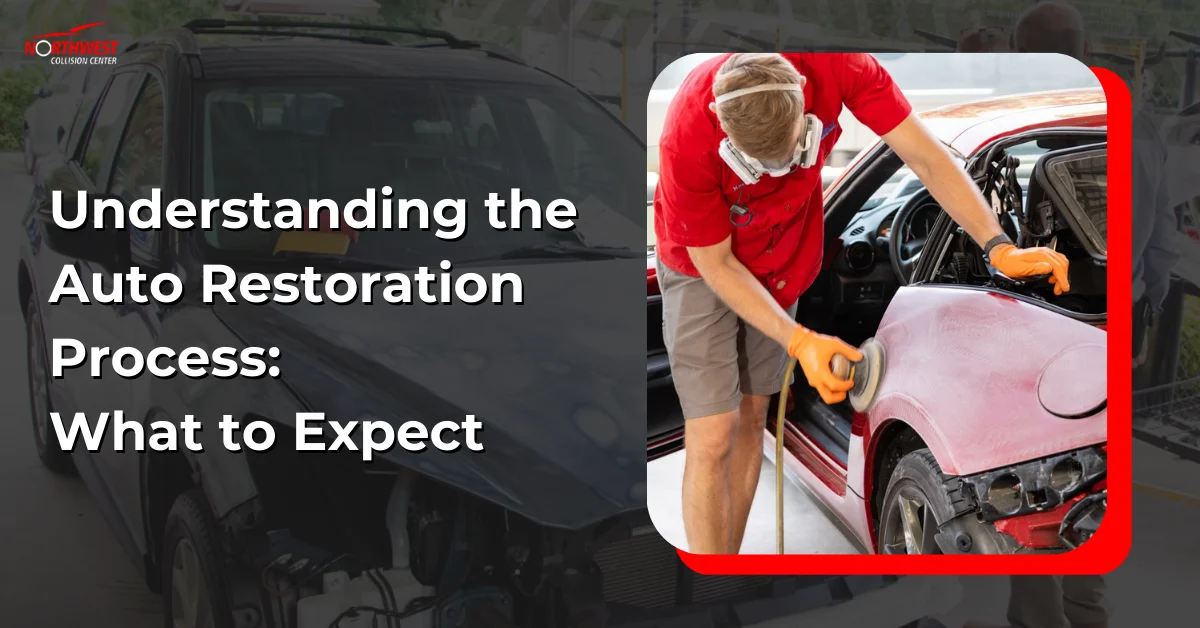You can effectively tackle common auto body issues yourself and save money by mastering straightforward DIY repair techniques. Start by removing paint scratches with rubbing compound or touch-up paint. Address dents using a hairdryer, compressed air, or a plunger. Fix bumper damage with plastic repair kits and heat guns. Repair windshield chips with specialized kits and guarantee safety with protective gear. Treat rust by sanding and applying rust converter and paint. Restore headlights for peak clarity using sandpaper, polishing compounds, and UV sealants. You’ll find that gaining these skills offers significant cost savings and self-reliance. Continue to uncover practical, detailed methods for top results.

Key Takeaways
- Save money by avoiding labor costs and expensive professional services.
- Gain practical skills and knowledge in vehicle maintenance.
- Achieve professional-quality results with simple, easy-to-follow techniques.
- Foster self-sufficiency and a proactive approach to car care.
- Enjoy the satisfaction and accomplishment of completing repairs independently.
Paint Scratch Removal
When dealing with paint scratch removal, make certain you thoroughly clean the affected area to avoid trapping dirt and debris under the new paint. Start by washing the scratch with automotive soap and water, then dry it completely. This initial step is vital to guarantee a clean surface for effective repair.
Next, you’ll need to assess the depth of the scratch. For light scratches that haven’t penetrated the clear coat, a rubbing compound can work wonders. Apply a small amount of compound to a microfiber cloth and gently buff the scratched area in circular motions. This will smooth out the scratch and blend it with the surrounding paint.
For deeper scratches, you might need touch-up paint that matches your car’s color. After cleaning, use fine-grit sandpaper to lightly sand the scratch, making the surface even. Apply a thin layer of primer if the scratch is down to the metal, then let it dry. Carefully apply the touch-up paint using a fine brush, following the manufacturer’s instructions. Allow it to dry completely before applying a clear coat.
Dent Repair Techniques
It’s time to address dent repair techniques to restore your car’s body to its original form. For an effective auto body repair DIY, you’ll need a few crucial tools: a hairdryer, compressed air, a plunger, or a specialized dent puller kit.
First, use the hairdryer to heat the dent for approximately 30 seconds. This makes the metal more pliable. Immediately follow up by spraying the area with compressed air. The rapid cooling will cause the metal to contract and, in many cases, pop the dent back into place. This technique is particularly effective for small to medium-sized dents.
For larger dents, a plunger can be surprisingly effective. Simply wet the dent and the plunger to create suction, then pull gently but firmly. If the dent doesn’t budge, you may need a professional dent puller kit. These kits usually come with glue guns and various pulling tabs that adhere to the dent, allowing you to pull it out with controlled force.
Always wear safety goggles and gloves to protect yourself from debris and sharp edges. By mastering these dent repair techniques, you can save money on car repairs while achieving professional results.
Bumper Fixes
For effective bumper fixes, you’ll need to gather materials such as a plastic repair kit, sandpaper, and a heat gun. Start by thoroughly cleaning the damaged area to remove any dirt or grime. Safety first: wear protective gloves and goggles. Next, use the heat gun to gently warm the damaged section, making the plastic more pliable. Carefully reshape the area using a plastic spreader from your repair kit.
Once the bumper is in shape, sand the area with fine-grit sandpaper to smooth out any rough spots. Apply the plastic filler from the repair kit and let it cure as per the instructions. Sand it again for a seamless finish. Finally, paint the repaired area with matching automotive paint to restore the bumper’s original look.
Windshield Chip Repair
To effectively repair a windshield chip, you’ll need a windshield repair kit, a clean cloth, and some rubbing alcohol to make certain the area is free from debris. Start by cleaning the chipped area thoroughly with the rubbing alcohol and cloth. This guarantees there’s no dirt or moisture that could interfere with the repair process.
Once the area is clean, follow the instructions on your windshield repair kit. Typically, you’ll need to place the adhesive disc over the chip and affix the pedestal. Carefully apply the resin from the kit into the pedestal, making sure it fills the chip completely. This step is critical in windshield chip repair as it prevents the chip from spreading and causing further damage.
After applying the resin, use the curing strip provided in the kit and place it over the resin-filled chip. Allow it to sit and cure as per the kit’s instructions, usually under direct sunlight. Finally, remove the curing strip and scrape off any excess resin with a razor blade.
Rust Treatment
When tackling rust treatment, start by donning protective gear such as gloves and safety glasses to shield yourself from harmful chemicals and debris. Rust can quickly spread and compromise your vehicle’s structural integrity, so addressing it promptly is crucial.
First, identify the rusted area and use a wire brush to remove loose rust and paint. Sand the area with medium-grit sandpaper until you reach bare metal. Clean the surface with a degreaser to make sure it’s free of contaminants. Apply a rust converter to chemically neutralize any remaining rust and provide a stable base for the next steps.
Next, apply a primer specifically designed for metal surfaces. This will help prevent future rust and prepare the area for painting. Use even strokes, and allow the primer to dry completely before adding a top coat of paint that matches your car’s color. Finally, seal the area with a clear coat to protect your work.
By following these steps, you can effectively manage rust and save considerably on body repair costs.
Headlight Restoration
To start your headlight restoration, gather crucial tools and materials like sandpaper, a polishing compound, and a clean microfiber cloth. Follow a methodical, step-by-step process to guarantee clarity and safety, beginning with masking off the area around the headlights to protect your car’s paint. Always wear protective gloves and eyewear to safeguard yourself from any chemicals or debris.
Necessary Tools and Materials
You’ll need a few vital tools and materials to effectively restore your headlights and guarantee a clear, safe driving experience. By equipping yourself with the right supplies, you can tackle this auto body repair DIY project confidently and save money on car repairs. Here’s what you’ll need:
- Headlight Restoration Kit: These kits typically include sandpaper, polishing compounds, and a protective sealant. They’re designed to make the process straightforward and efficient.
- Microfiber Cloths: Important for applying and removing compounds without scratching your headlight lenses. Soft, lint-free cloths provide a streak-free finish.
- Painter’s Tape: To protect the areas surrounding your headlights. It’s vital for preventing accidental damage to your car’s paint job while you work.
- Spray Bottle with Water: Wet sanding is a significant step in headlight restoration. A spray bottle allows you to keep the surface adequately lubricated, facilitating a smoother sanding process.
Step-by-Step Process
Frequently, starting the headlight restoration process involves thoroughly cleaning the headlight lenses with soap and water to remove any surface grime or debris. This step is vital for achieving a clear lens and guaranteeing the following steps are effective.
Once the lenses are clean, dry them completely. Next, tape around the headlights to protect your car’s paint. Use painter’s tape as it won’t leave residue. Begin with a coarse-grit sandpaper (around 1000 grit) and wet-sand the lens. Move in horizontal strokes to remove the cloudy layer. Make certain you keep the surface wet to avoid scratches.
After the initial sanding, switch to a finer grit sandpaper (2000-3000 grit) and repeat the process, this time using circular motions. This step smooths out any remaining imperfections. Again, keep the surface wet.
Next, apply a plastic polish to the lens, using a microfiber cloth. Buff in circular motions until the lens appears clear. This step requires patience but is fundamental for getting professional results in your auto body repair DIY project.
Finish by applying a UV sealant to protect the lens from future damage. By following these steps, you can save money on car repairs and reduce body repair costs considerably.
Conclusion
These DIY auto body repair tips guarantee you’re not just saving a fortune, but also becoming a hero in your own driveway! Imagine flawlessly removing paint scratches, expertly fixing dents, and making bumpers look brand new—all while guaranteeing safety and precision. Plus, with headlight restoration, windshield chip repair, and rust treatment, your car will practically gleam with perfection. Immerse yourself in these techniques, and you’ll transform into the ultimate auto body repair guru!










